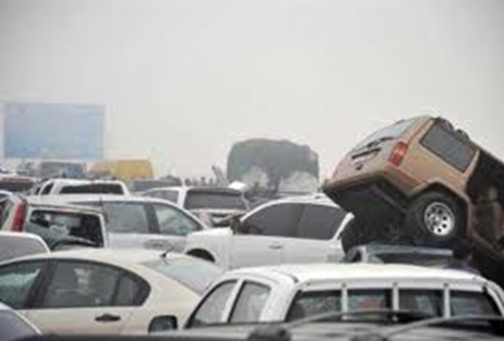ABU DHABI – Traffic experts have said that high speeding, not fastening and wearing seat belts, lack of child restraints and passing red lights were among the serious road safety problems in the UAE last year.
“Abu Dhabi has seen a decrease in fatal crashes, which in itself is a significant stride,” said Glenn Havinoviski, an associate vice president of transport systems at Iteris, a US traffic-management company.
“The increased traffic volumes around Dubai will naturally result in more accidents and the question is whether the accident rate can be reduced.”
In 2012 there were 8.66 deaths on the emirate’s roads for every 100,000 people, down from 10.65 in 2011, he said.
But Mr Havinoviski said the interest in reducing crashes “is still offset by those who love to drive fast, which to a great extent is part of the regional culture”.
“Speeding is still a widespread problem although many government agencies are gearing up to curb this practice,” Dr Bendak said.
In the first eight months of last year, 2,534 vehicles were impounded for driving in excess of 200kph in Abu Dhabi, police statistics show.
Lt Col Jamal Al Ameri, head of public relations at the traffic department, cited excessive speed, using mobile phones while driving, tailgating and inattention as common causes of accidents.
“Eighty-six per cent of accidents are caused by the human factor, and the remaining 14 per cent occurs because of vehicles and roads,” Lt Col Al Ameri said.
Ten new cameras have been fitted to traffic lights in the capital, raising the number of equipped junctions to 36.
Brig Gen Hussein Al Harthi, director of the traffic department, said the devices used the latest infrared, no-flash technology to capture offences such as running red lights, infringing on pedestrian lines, speeding and making turns or changes from the wrong lanes.
Abdullilah Zineddin, a road safety expert, wanted to see more emphasis on seat belts for all passengers and compulsory child restraints.
“I noticed most people wear seat belts when they’re sitting in front but I still don’t see too many people who wear seatbelts when they’re travelling in the rear of a car,” said Dr Zineddin.
“It also breaks my heart when I see children not restrained in their car seats. What were the parents thinking? Where are the laws that protect these children?”
The Government has been discussing legislation for mandatory child restraints since 2008.
The 2013 Global Status Report on Road Safety, which was based on 2010 data, said recommended three key federal laws: mandatory seat belts, child car seats and bicycle helmet standards.
This year he would like to see legislation on mandatory car parks and proper entrance and exit areas in front of schools and mosques, mandatory seat belts and child cars seats, and more sophisticated road safety campaigns using social media and television.
Mr Havinoviski said: “Child car seats and selt belts in cars must be made mandatory and enforced rigidly. The child death rate in accidents is way too high so education of adults, not just teenagers, is needed.”
“Signs on major highways need to provide consistent destination, route number and street name information,” Mr Havinoviski said. “Reducing confusion may reduce congestion and, of course, improves safety.”
The plan should include engineering, enforcement, education and emergency management strategies.
Mr Havinoviski added: “The police and transport agencies seem to be trying very hard to educate the public but the public has to be willing to listen.
“Many people seem to think tragedies will never happen to them.”
For more information about Car Disposal, please visit



